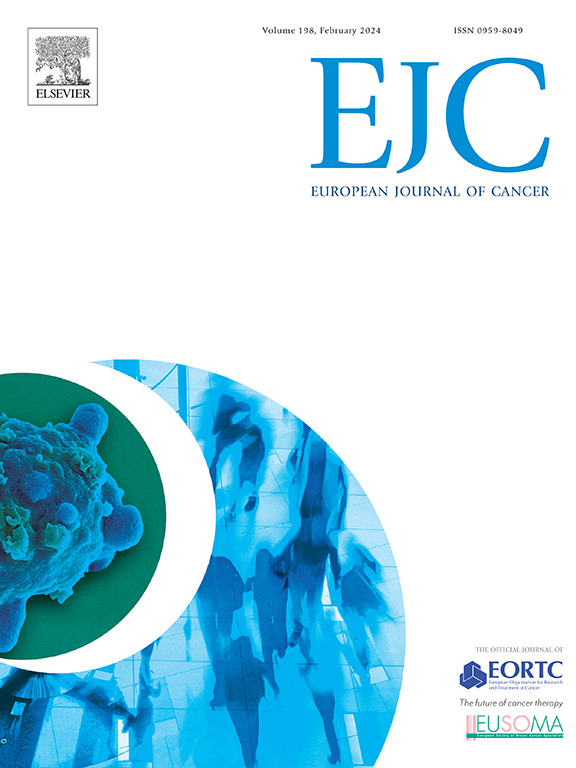Evaluation of residual tumour in wide local excision for melanoma: A nationwide population-based study
IF 7.6
1区 医学
Q1 ONCOLOGY
引用次数: 0
Abstract
Background
Melanoma incidence is increasing, emphasizing the need for optimized management. Wide local excision (WLE) remains the standard for locoregional disease control. The main advantage of WLE is likely in removing microsatellite lesions near the primary tumour if fully excised. This study evaluates the incidence of residual tumour in WLE specimens using a large nationwide cohort. This to refine patient selection and support a more evidence-based approach to surgical management
Methods
A nationwide, population-based study was conducted using data from the Dutch Pathology Databank. Patients diagnosed with melanoma between 2000 and 2023 who had a completely resected tumour with diagnostic excision without reported microsatellite lesions.
Results
Among 44,628 patients undergoing WLE, 2.1 % had residual tumour. Residual tumour was significantly correlated with increased Breslow thickness, ulceration and nodular melanoma subtype. The incidence of residual tumour increased with advancing T stage, from 1.2 % in Tis to 11.2 % in T4b melanomas.
Conclusion
The incidence of residual tumour following WLE for melanomas up to T2 is low (< 3 %). Our findings suggest that omission of the WLE for all melanomas up to T2 may well be considered.
黑色素瘤大面积局部切除后残留肿瘤的评估:一项基于全国人群的研究。
背景:黑色素瘤发病率不断上升,强调了优化治疗的必要性。广泛局部切除(WLE)仍然是局部疾病控制的标准。如果完全切除,WLE的主要优点可能是切除原发肿瘤附近的微卫星病变。本研究通过一个全国性的大队列来评估WLE标本中残留肿瘤的发生率。方法:一项全国性的、基于人群的研究使用了来自荷兰病理数据库的数据。2000年至2023年间诊断为黑色素瘤的患者,诊断性切除完全切除肿瘤,未报告微卫星病变。结果:44,628例患者中,肿瘤残留率为2.1% %。残余肿瘤与brreslow厚度增加、溃疡和结节性黑色素瘤亚型显著相关。残余肿瘤的发生率随着T期的进展而增加,从Tis的1.2 %到T4b黑色素瘤的11.2 %。结论:T2期黑素瘤WLE后残留瘤发生率较低(< 3 %)。我们的研究结果表明,对于T2以下的所有黑色素瘤,WLE的遗漏可能是值得考虑的。
本文章由计算机程序翻译,如有差异,请以英文原文为准。
求助全文
约1分钟内获得全文
求助全文
来源期刊

European Journal of Cancer
医学-肿瘤学
CiteScore
11.50
自引率
4.80%
发文量
953
审稿时长
23 days
期刊介绍:
The European Journal of Cancer (EJC) serves as a comprehensive platform integrating preclinical, digital, translational, and clinical research across the spectrum of cancer. From epidemiology, carcinogenesis, and biology to groundbreaking innovations in cancer treatment and patient care, the journal covers a wide array of topics. We publish original research, reviews, previews, editorial comments, and correspondence, fostering dialogue and advancement in the fight against cancer. Join us in our mission to drive progress and improve outcomes in cancer research and patient care.
 求助内容:
求助内容: 应助结果提醒方式:
应助结果提醒方式:


